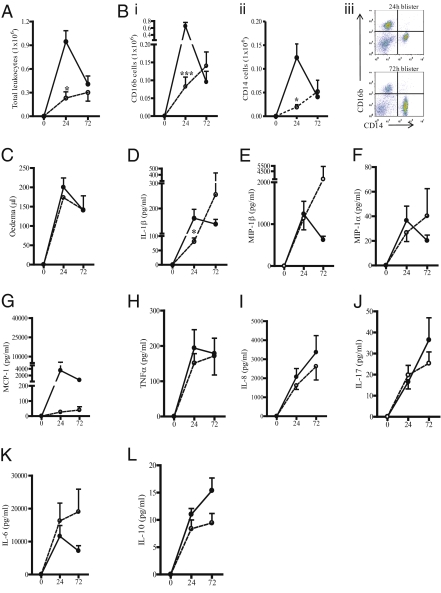Fig. 2.
Dichotomy in the profile of acute inflammatory responses in humans. The inflammatory profile of cantharidin-elicited skin blisters in aspirin responders was charted over time (in h) and compared with nonresponders showing that blister total cell numbers (A), CD16b-positive PMNs (Bi), and CD14-positive monocytes/macrophages (Bii) in aspirin responders (solid line) peaked in an immediate early manner and resolved quicker than in aspirin nonresponders (dotted line); with (Biii) a representative FACS dot plot charting the change from primarily CD16b-positive PMNs at 24 h to CD14-positive monocytes/macrophages at resolution in Ervs. (C) Blister edema accumulation did not follow this trend. (D–L) Blister fluid exudate proinflammatory cytokines and chemokines with biologically relevant levels broadly mirrored inflammation in both groups. These profiles gave rise to us defining responses as early resolvers (Ervs) or delayed resolvers (Drvs). Data are presented as mean ± SEM; *P < 0.05 and ***P < 0.001 represent differences in inflammatory parameters between Ervs and Drvs at 24 h.

